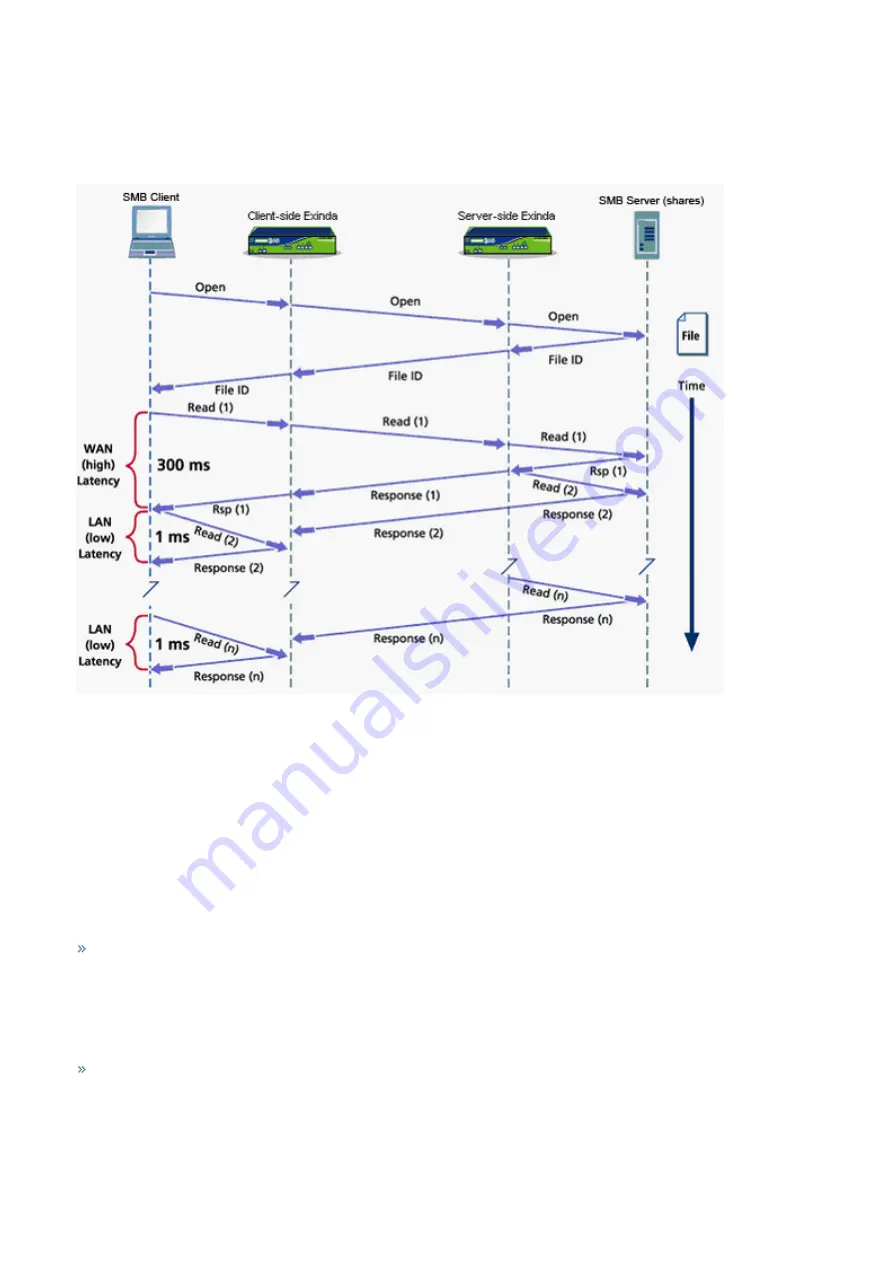
Exinda Network Orchestrator
4 Settings
|
492
between the two computers more efficient. Exinda maintains a state machine and database of SMB behaviors that it
relies upon to optimize future SMB related transactions. When Exinda determines that a certain SMB transaction is likely
to occur, it pre-fetches data and temporarily stores it in the appliance memory for future reference. Once the pre-fetched
data is referenced, the data is deleted from the memory. See the following figure.
SMB acceleration works seamlessly for TCP Acceleration, WAN Memory, and Compression, and benefits from the ability of
the WAN memory to reduce data traversing the WAN, just as with other applications such as FTP, HTTP, or email.
To deal with the inefficiencies of the SMB protocol Exinda has developed several optimizations to improve the
performance of applications using this protocol. Each version of SMB handles file transfer optimizations in different ways,
and may include reading ahead of the data stream, writing behind the data stream, and caching meta data about files
and folders. In addition to this, the Exinda Appliance ensures that data is efficiently compressed and deduplicated.
SMB1
With SMB1 there are several opportunities to provide optimizations: object caching, read ahead and write behind of
data, and meta-data caching.
Object Cache
This refers to the saving of files to an internal file storage area on the appliance. When a client reads a file, it is cached on
both the client side and server side appliances. This significantly improves response time for successive reads of the
same file as it occurs at LAN speed instead of WAN speed. When a client writes a file, the object cache is updated which
allows successive reads of the file to be served as efficiently as possible without having to use the WAN.
Read Ahead
Reading ahead of the data stream is an optimization by which the appliance pre-fetches the contents of a file ahead of
the client that is attempting to read it. When the Exinda Appliance detects a client attempting to perform a sequential
bulk read of a file, the appliance fabricates read requests to the server on behalf of the client. The end result is that the
Summary of Contents for EXNV-10063
Page 369: ...Exinda Network Orchestrator 4 Settings 369 ...
Page 411: ...Exinda Network Orchestrator 4 Settings 411 Screenshot 168 P2P OverflowVirtualCircuit ...
Page 420: ...Exinda Network Orchestrator 4 Settings 420 Screenshot 175 Students OverflowVirtualCircuit ...






























